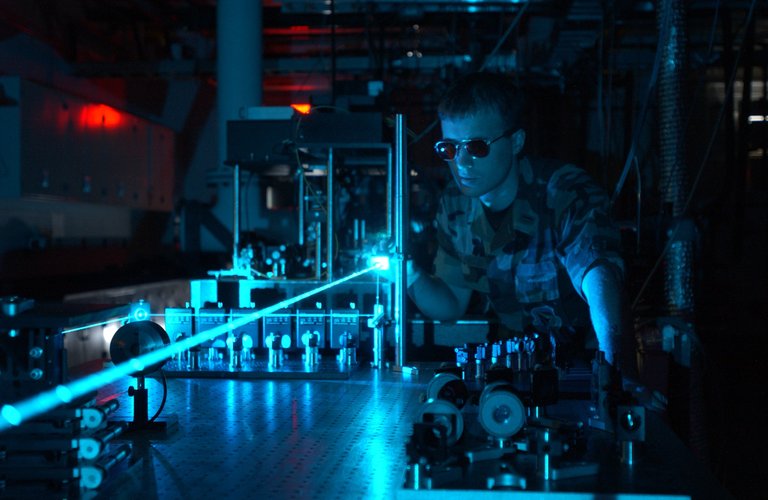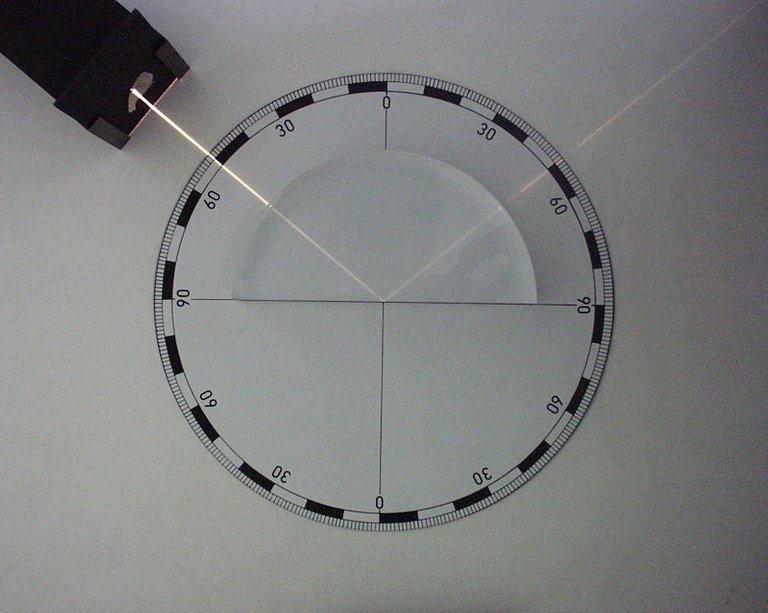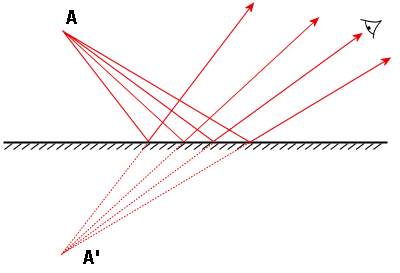Visible light is that aspect of radiant energy which stimulates the retina of the eye to create a sensation of vision. Light rays and waves, infrared, ultraviolet rays etc. The sensors in the retina convert the energy they receive into electrical impulses which are carried by the optic nerve to the brain for decoding.
A normal human eye can distinguish the colours of the rainbow from red to violet and focus on the objects ranging from about 30cm from the eye out to infinity. So therefore the study of light is generally referred to as optics which is further divided into two phases geometrical and physical optics.

image from pexels
GEOMETRICAL OPTICS
This aspect of optics deals with rays. A ray is the path along which light energy travels and a ray can also be viewed as the motion of a stream of particles (photons) emanating from a source. Using the ray concept simplifies calculations and rays propagate in straight lines (rectilinear propagation of light) and this has enabled the explanation of the formation of shadows of objects in the path of light, formation of photographic images in pin hole cameras and the eclipses of the sun and moon. The light sensor in a camera is a photographic film which means chemical changes occur in the film negative where it receives light. The image can then be fixed in the film chemically when it is developed, and it can be enlarged and printed onto photographic paper. Photographic negatives are also sensitive to rays we cannot see with our eyes like X-ray, ultraviolet etc so described above. The chemical changes on the negative can also be triggered by bombardment with charged particles and this means that a photographic film can record some radiation we cannot see when a bundle of rays proceeds from a source in a particular direction it is a beam. And this beam could be.
- Parallel if the rays are parallel. This is the situation for rays from distant sources like the sun
- Convergent if the rays approach each other. A typical example is when a source is behind a lens like in a projection lantern
- Divergent if the rays are separating, for example rays from a lamp.

Wikimedia cco:military laser experiment
PHYSICAL OPTICS
while in physical optics the wave nature of electromagnetic waves such as light is shown in the phenomenon of interference and diffraction. For instance the colours in thin films as soap bubbles and oil films on a wet road are due to interference effects. An example of diffraction effects is the halo around a street lamp seen through a fog of water particles which would not exist if the lamp were seen through a continuous mass of water if the wave nature of light is true, then light should bend round a corner in the same way that sound travels round a corner.
In 1802, Thomas young showed experimentally that light could bend round a corner. It is observed that when a wave is obstructed by an opaque obstacle, the incident waves appear to bend round the obstacle and form fringe patterns in the region of geometrical shadow. Similarly, waves going through a transparent hole in an opaque object are spread out in the region of the geometrical shadow. This deviation from rectilinear propagation is an incontrovertible evidence for the wave nature of light.
REFLECTION AT PLANE SURFACE
What happens to any beam of light incident on a surface depends on the nature of the surface. Part of the beam could be absorbed if the surface is opaque like wood, or it could be transmitted if the surface is transparent e.g Clear glass. If the body transmits light but such that an object cannot be seen through it, the body is translucent e.g Some types of louvre blades.
Ordinary glass reflects only about 4% of the light incident on it while polished metal surfaces reflect about 90% of the incident light. To ensure optimum reflection, mirrors are normally made by depositing silver on the back of glass. And these are laws of reflection which are obeyed wherever reflection takes place.
- The incident ray, the reflected ray and the normal to the reflecting surface at the point of incidence are in the same plane
- The angle of incidence is equal to the angle of reflection. And there are two main types of reflection Regular and Diffuse reflection

Wikimedia cco: total internal reflection
REGULAR REFLECTION
in this case a parallel beam is reflected as parallel beam. This is the situation with smooth surface.
DIFFUSE REFLECTION
here, although a parallel beam may be incident on a surface, the reflected beam is not parallel. This happens with rough surfaces. The reason for the diffuse reflection is that because of the rough, different angles of incidence are presented to the incident beam but at each point the laws of reflection are obeyed. Different objects e.g books, walls, human beings are seen by light diffusely reflected from them into the eye.
IMAGE FORMATION IN PLANE MIRRORS
one consequence of reflection is that the image of an object is as behind the plane reflecting surface (mirror) as the objects is in front. Also the object and image lie on a line normal to the reflecting surface. The size of the image is the same as the size of the object as is evident when we stand in front of a mirror. This entails a magnification, defined by of Image/size of object of unity.

Wikimedia creative commons: plane mirror
REFLECTION AT CURVED SURFACES
Curved mirrors are polished surfaces made from portions of spherical surfaces. The same laws of reflection hold as for the plane mirror, but image formation differs. The center of curvature of the mirror is the center of the sphere, this also applies to the radius of curvature. If the inner surface of the mirror is the polished and reflecting surface, it is a concave mirror. If the outer surface reflects, the mirror is a convey mirror. The middle point of the mirror is called the pole, and the line joining is called the principal axis. If a beam of light parallel to the principal axis is incident on a concave mirror the beam will converge at principal focus or focal point.
IMAGE FORMATION IN CURVED MIRRORS
some keys which are important in forming images in curved mirrors are
- Any ray parallel to the principal axis will be reflected by the mirror to pass through the principal focus
- Any ray passing through the center of curvature of the mirror will hit the mirror normally (This means angle of incidence of zero) and will be reflected back along the same path.
- A ray hitting the pole or any other part of mirror will be reflected such that the laws of reflection are obeyed. At least two of the above rays are required to locate the image of a point.
REFERENCES
- Reflection of light
- Reflection of light and image formation
- Wikipedia: Reflection
- Wikipedia: Plane mirror
- Wikipedia: Curved mirror
Wow reflecting the surface is instead called curve.also I think the parallel beam of light is incident spherical mirror, the point where the reflected rays on coverage area.
You are right bro you sure know physics
Quite educative. You sure matered physics
Physics is so versatile because of it's very nature. it is the understanding of the laws of nature. as a physicist, you are like a safari guide through the entire world and You become open-minded. Thanks for your nice compliment
Well done. This reminds me of olevel physics, optics to be precise.
Thank you